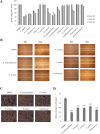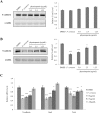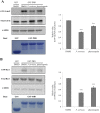Lichen Secondary Metabolite, Physciosporin, Inhibits Lung Cancer Cell Motility
- PMID: 26371759
- PMCID: PMC4570789
- DOI: 10.1371/journal.pone.0137889
Lichen Secondary Metabolite, Physciosporin, Inhibits Lung Cancer Cell Motility
Abstract
Lichens produce various unique chemicals that can be used for pharmaceutical purposes. To screen for novel lichen secondary metabolites showing inhibitory activity against lung cancer cell motility, we tested acetone extracts of 13 lichen samples collected in Chile. Physciosporin, isolated from Pseudocyphellaria coriacea (Hook f. & Taylor) D.J. Galloway & P. James, was identified as an effective compound and showed significant inhibitory activity in migration and invasion assays against human lung cancer cells. Physciosporin treatment reduced both protein and mRNA levels of N-cadherin with concomitant decreases in the levels of epithelial-mesenchymal transition markers such as snail and twist. Physciosporin also suppressed KITENIN (KAI1 C-terminal interacting tetraspanin)-mediated AP-1 activity in both the absence and presence of epidermal growth factor stimulation. Quantitative real-time PCR analysis showed that the expression of the metastasis suppressor gene, KAI1, was increased while that of the metastasis enhancer gene, KITENIN, was dramatically decreased by physciosporin. Particularly, the activity of 3'-untranslated region of KITENIN was decreased by physciosporin. Moreover, Cdc42 and Rac1 activities were decreased by physciosporin. These results demonstrated that the lichen secondary metabolite, physciosporin, inhibits lung cancer cell motility through novel mechanisms of action.
Conflict of interest statement
Figures






References
-
- Ferlay J, Soerjomataram I, Dikshit R, Eser S, Mathers C, Rebelo M, et al. Cancer incidence and mortality worldwide: sources, methods and major patterns in GLOBOCAN 2012. International journal of cancer Journal international du cancer. 2015;136(5):E359–86. Epub 2014/09/16. 10.1002/ijc.29210 . - DOI - PubMed
-
- Greenlee RT, Murray T, Bolden S, Wingo PA. Cancer statistics, 2000. CA: a cancer journal for clinicians. 2000;50(1):7–33. Epub 2000/03/29. . - PubMed
-
- Reck M, Heigener DF, Mok T, Soria J-C, Rabe KF. Management of non-small-cell lung cancer: recent developments. The Lancet. 2013;382(9893):709–19. - PubMed
Publication types
MeSH terms
Substances
LinkOut - more resources
Full Text Sources
Other Literature Sources
Medical
Research Materials
Miscellaneous

